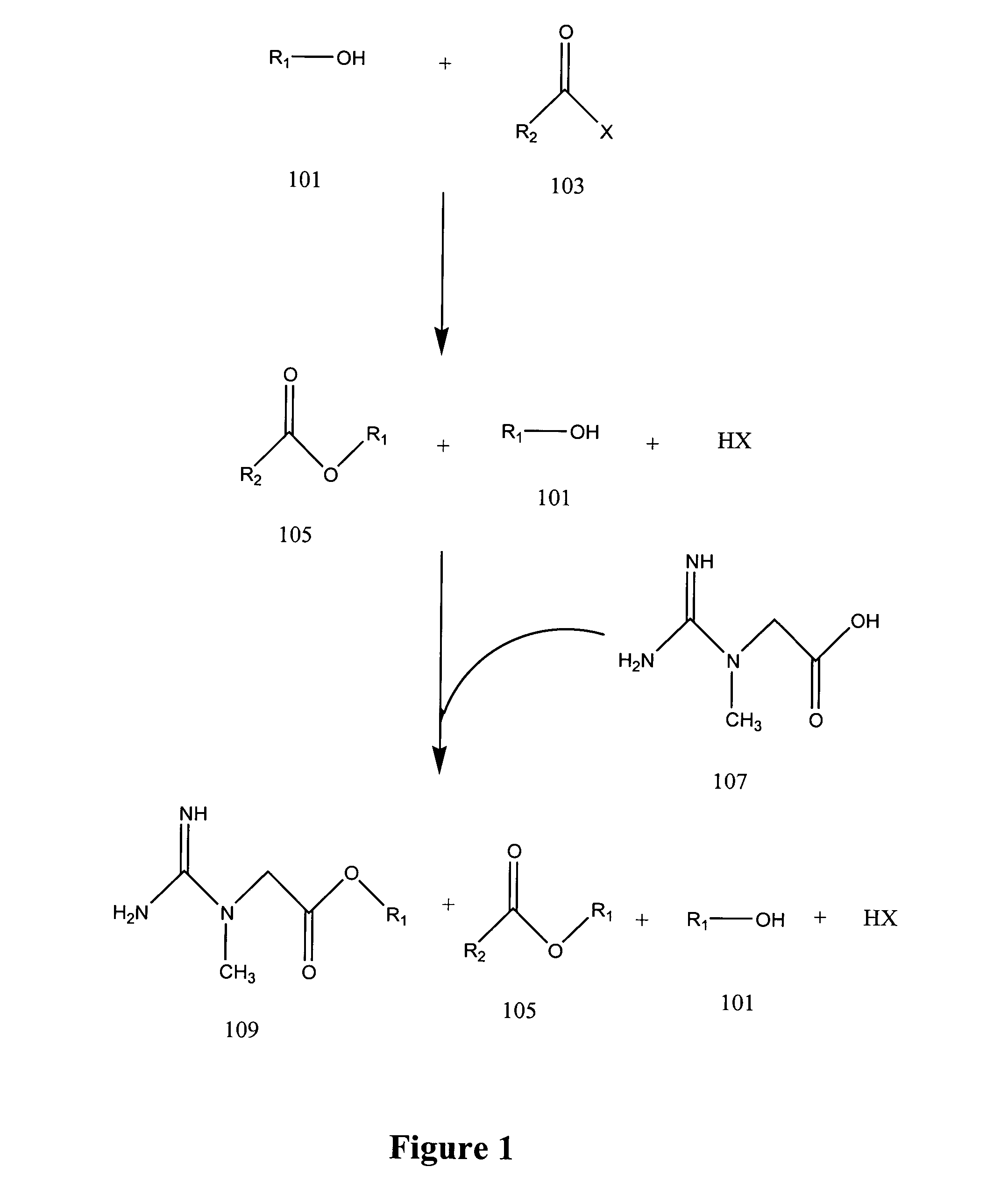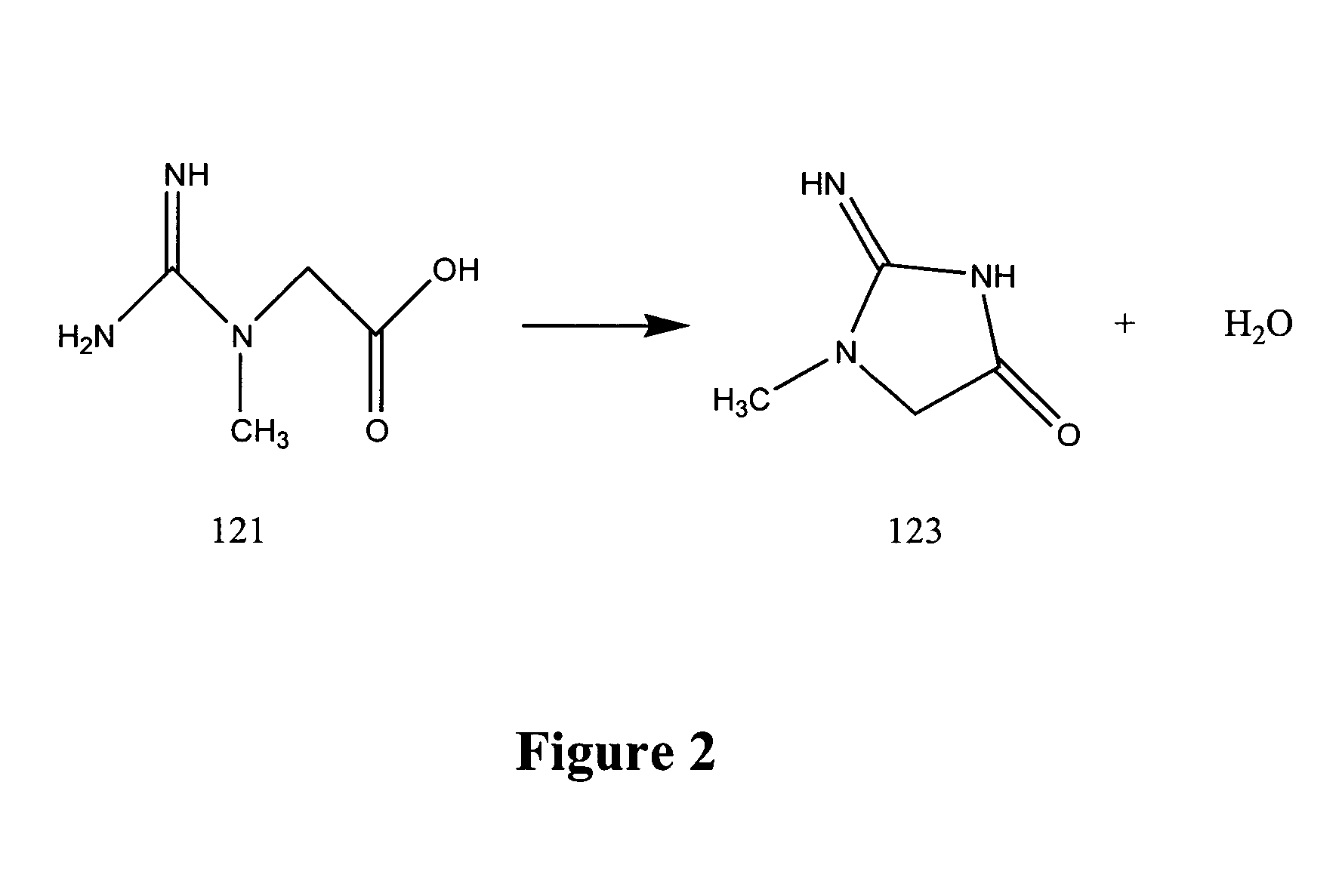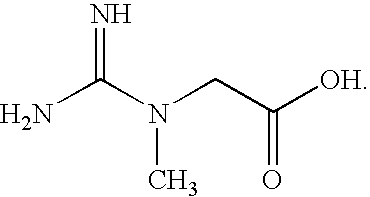Production of creatine esters using in situ acid production
a production method and technology of creatine esters, applied in the field of production of creatine esters using in situ acid production, can solve the problems of bloating, diarrhea, and gastrointestinal distress of gi, and achieve the effects of gastrointestinal distress, diarrhea, and bloating
- Summary
- Abstract
- Description
- Claims
- Application Information
AI Technical Summary
Benefits of technology
Problems solved by technology
Method used
Image
Examples
example 1
Synthesis of Creatine Ethyl Ester Hydrochloride by Acid-Catalyzed Esterification of Creatine Monohyrdate
A 1.5 molar equivalent of acetyl chloride was added dropwise to either anhydrous ethanol protected by a calcium chloride drying tube with constant stirring. The acetyl chloride was added at such a rate so as to prevent the temperature of the acidified solvent from exceeding 60° C.
The temperature of the acidified ethanol was then allowed to decline to about 35 to 40° C. When the acidified ethanol reached the lower temperatures, creatine monohydrate was added in one portion in the ratio of 1 g of creatine monohydrate to 6 to 10 ml of acidified ethanol. The resultant reaction was stirred for 2 to 8 hours at about 40 to 50° C.
The temperature of the reaction mixture was then allowed to cool to about room temperature with constant stirring. White crystalline creatine ethyl ester hydrochloride (CEE HCl) was collected by vacuum filtration and washed with approximately 1 ml of ice c...
example 2
Optimization Experiments
Optimization experiments were performed by varying certain parameters of the reaction scheme in Example 1, as described below. A 1.5 mole equivalent of acetyl chloride was added dropwise to anhydrous ethanol to generate the acidified ethanol. Creatine monohydrate was added to the acidified ethanol at a ratio of 1 g:6 ml of ethanol and the reaction medium was heated to 37° C. for 20 hours. The reaction medium was then allowed to cool to 30° C. prior to filtration and the product (filter cake) was washed with ethanol chilled to 0° C. The amount of ethanol used in the wash was on a 1:1 w / v (g / ml) basis with the quantity of creatine monohydrate employed as the starting material. This reaction scheme yielded an 83 to 86% conversion of creatine monohydrate to CEE HCl.
A. Length of Reaction Time
Shortening the reaction time from 20 hours to 10-12 hours resulted in a decrease in the conversion of creatine monohydrate to CEE HCl to about 76 to 83%. Increasing the ...
PUM
| Property | Measurement | Unit |
|---|---|---|
| temperature | aaaaa | aaaaa |
| temperature | aaaaa | aaaaa |
| temperature | aaaaa | aaaaa |
Abstract
Description
Claims
Application Information
 Login to View More
Login to View More - R&D
- Intellectual Property
- Life Sciences
- Materials
- Tech Scout
- Unparalleled Data Quality
- Higher Quality Content
- 60% Fewer Hallucinations
Browse by: Latest US Patents, China's latest patents, Technical Efficacy Thesaurus, Application Domain, Technology Topic, Popular Technical Reports.
© 2025 PatSnap. All rights reserved.Legal|Privacy policy|Modern Slavery Act Transparency Statement|Sitemap|About US| Contact US: help@patsnap.com



